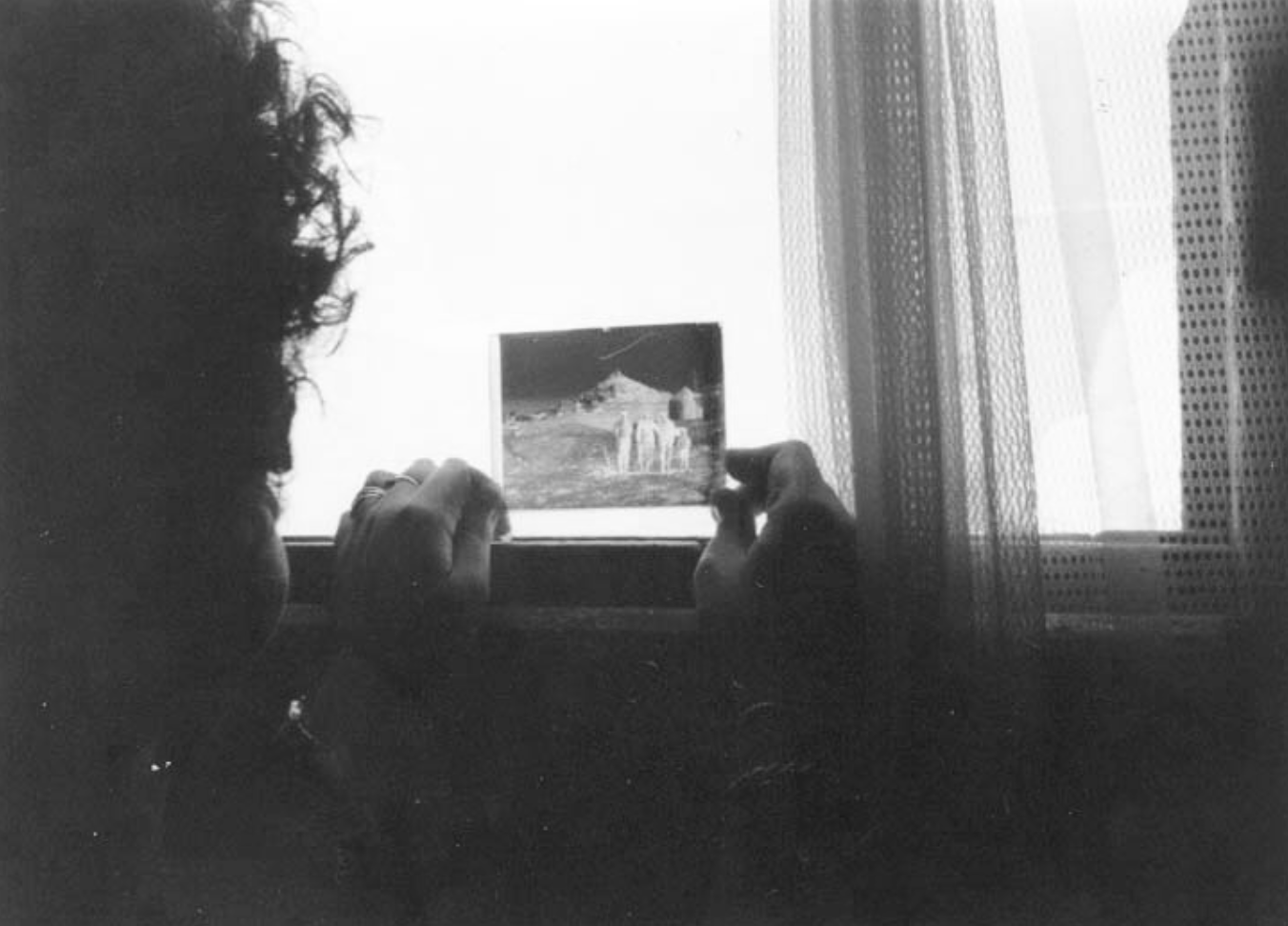δ
THE ANAFI PHOTO-ARCHIVE
The Anafi photo-archive consists of over 160 glass and celluloid negatives, dating from between 1935 and 1942 and showing the lives of a commune of political exiles whose members lived on the island. They were mostly people who had been sentenced to “administrative deportation” under laws which declared that ideas and actions which might threaten the existing state of affairs in Greece were a public danger.
The archive came to light as a result of a long-term association with the island, its residents, and island migrants in Athens. As a postgraduate student in anthropology during the 1960s, I carried out research among the local community on the island, to which political detainees, and other kinds of exiles, had been sent from the 1920s onwards.
The main themes of my first research were the organizing principles of the islanders’ lives-inheritance, dowry and ritual obligations. In the seventies I went on to study the lives of the migrant islanders living in Athens and the micro-politics of their Migrants’ Association; in the eighties some of these migrants returned to the island to become involved in its development for tourism. At the end of research into the role of return migrants in tourism development, I was invited, in July 1988, by an island family I had known since 1966 to set aside a morning to come and look at some mementoes, enthimia.
Several wooden boxes were set out on a table. One contained hand-made shadow puppets, constructed from cardboard pieces joined together with hinges cut and hammered out of sardine tins. In the other boxes were the negatives, some large glass plates, others were tiny, brittle pieces of celluloid. These boxes, I was told, had been hidden in one of the houses which the political exiles had rented, concealed by a false wall where minute books and other memorabilia were also stored.
When the exiles were shipped to Athens during the Occupation, their archives had been left behind. Much later, children playing in the abandoned house had found the false wall, and some of the boxes were taken out before the local police began to investigate and destroyed what they found. Some of the negatives show scenes which had been carefully set up and posed: large and small groups of people in rows, often with a caption etched onto the glass. Others are more informal, almost “candid camera”shots of people bathing in the sea, or having a picnic outside the village.
There are quite a number of pictures of individuals, others are landscapes on the island showing its only village, its small harbour, the terraced hills where crops were grown. A few were of village events: a festival, a wedding, a funeral. One set of images records the events of 25 March 1941, just before an Italian garrison reached the island and the exiles became “hostages of the occupying powers”. Another set shows the funerals of those who died during the starvation winter of 1941-42. (Prof. Margaret Kenna, Gateway to the Anafi Photo-Archive (excerpts and photos))
March 2015










